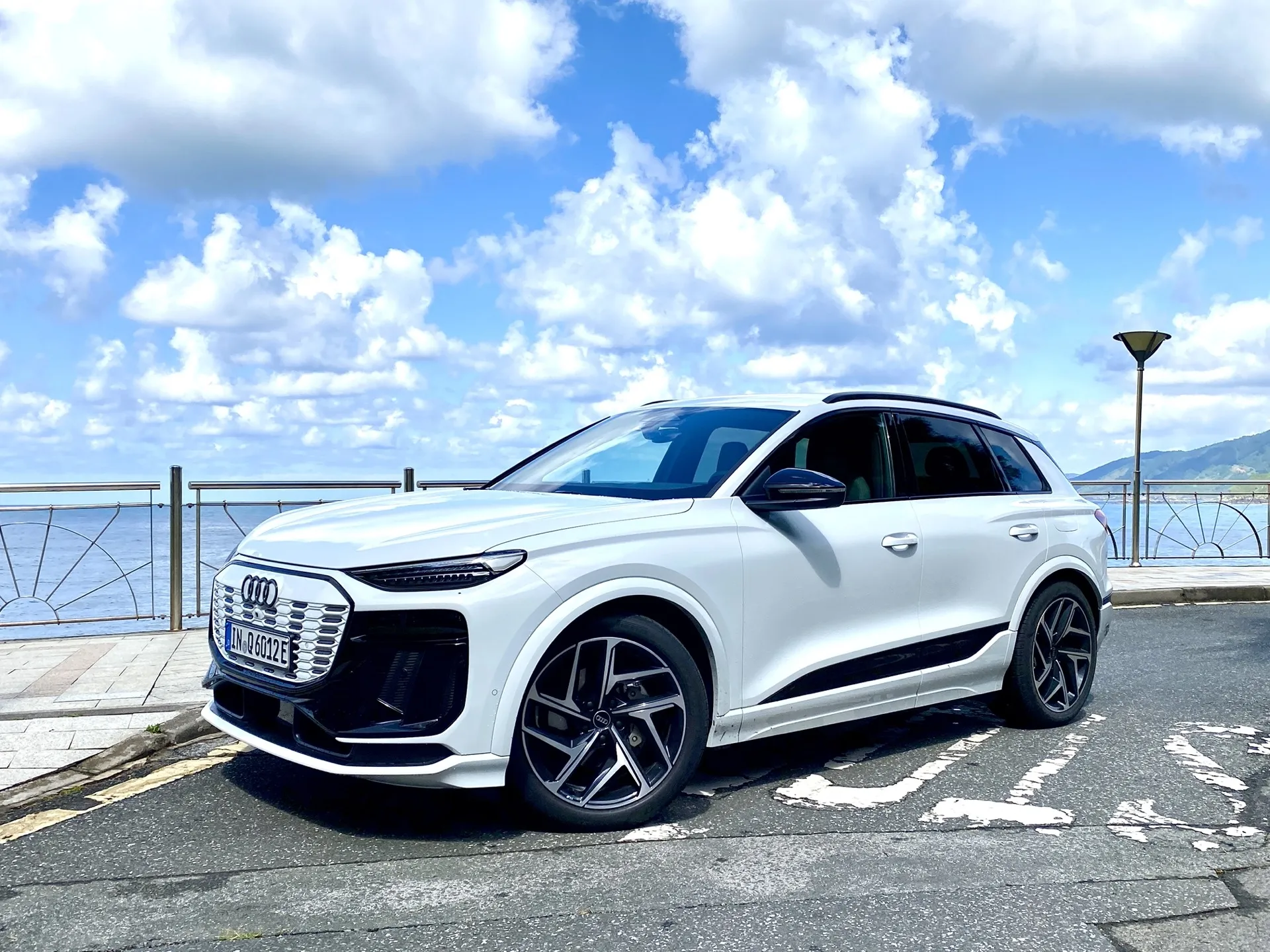[ad_1]
Swift acceleration and ride handling that vary between the world-isolating and the road hugging earn the Q6 E-Tron an 8 here.
Yes, dual-motor all-wheel-drive is standard. Audi employs a 140-kw induction motor on the front axle that helps with takeoff and supplements heavy power demands, but when cruising it virtually decouples, or spins freely, so only the 280-kw permanent magnet synchronous motor in back serves as the propulsion unit. This setup best balances power and efficiency.
How fast is the Audi Q6 E-Tron?
Those more energy-dense and compact motors generate 422 hp in the base Q6, or 456 hp in bursts with launch control that get it to 60 mph in 4.9 seconds. In the SQ6, the control module tunes the motors to generate more power, up to 509 hp and a 0-60 mph time of 4.1 seconds. Torque breaks down to 203 lb-ft from the front induction motor, which gives it that boost off the line lacking in the Q4 and Q8 E-Tron models, and 428 lb-ft in the PSM rear motor.
There’s no trick to launch control: one foot on the brake, one on the accelerator, lay off the brake, then go. Power comes on quickly but the Q6 doesn’t have that gut-dropping pull of more performance-minded electric cars; the SQ6 could make your stomach smile. In both cases, the power is well modulated so it feels linear, and the drive modes provide more nuance to its responsiveness: Dynamic has a firm pedal response, while Efficiency is mushier, as expected. There are also Comfort and Off-Road modes, but with a relatively low ground clearance (unspecified as of press time), we can’t imagine anything more than getting through mud on a dirt path.
An Individual mode enables customization of braking, throttle, and steering inputs, and when owners swap out the standard steel springs for the lovely air suspension and adaptive dampers that we tested, the modes affect the suspension height and the damping. It lowers 0.8 inches in Dynamic from Comfort, or 1.2 inches in Efficiency at cruising speed, while Off-road correspondingly raises it, so at most the air suspension travels about 2.5 inches.
We didn’t test a model with just the steel springs and independent suspension, and the beefier bits in the SQ6, such as thicker anti-roll bars, lead to less squish in turns than the Q6. The SQ6 handles with more agility than its 5,300-pound curb weight would suggest, thanks also to its low ride height and low center of gravity, giving it an almost wagon-like feel that’s missing from the other E-Tron SUVs.
The new electric platform’s diet also gave way to a new steering rack that’s connected to the subframe. The steering through the flat-bottomed wheel feels more connected to the road, and the resistance changes based on how you’re driving, so it’s light and loose at low speeds then tightens up.
Audi’s latest regenerative braking system
Most of the braking is handled by the motors, capturing up to 0.25 g of deceleration. Audi offers up to five regen braking settings that cast the widest net over possible EV adopters. Selecting “B” mode in the gear selector pad in the console activates one-pedal driving so you’re braking by laying off the accelerator. Once at a full stop, it doesn’t creep forward. There are also three paddle shifter settings to modulate the level of regen, including the lowest setting that coasts like a gas car. The default Auto mode leaves it in the hands of the Audi programmers, and they’re good, smart hands; it’ll modulate regen based on the road and the cars ahead.
[ad_2]
Source link
